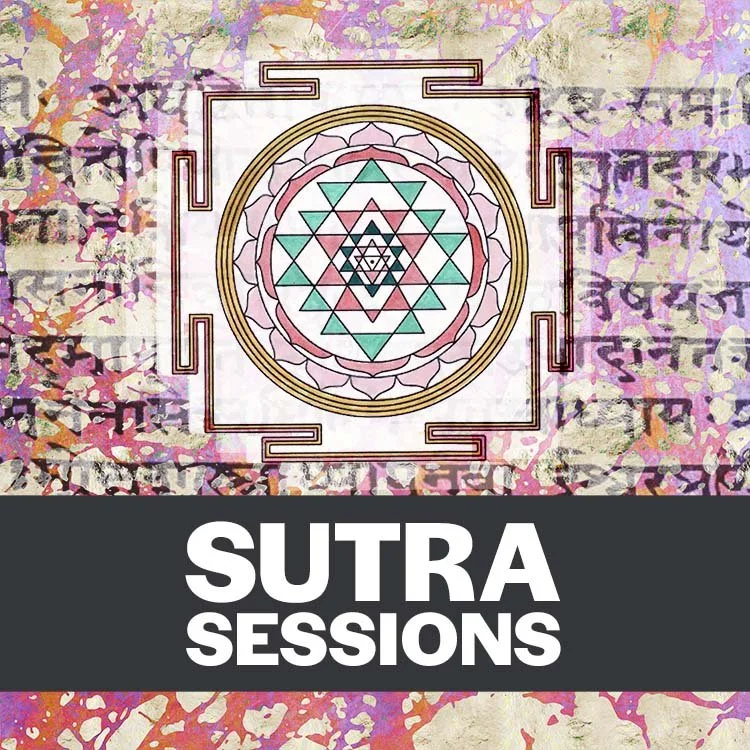Preface
The simple question that lies in the heart of every human, ‘who am I?’ is a question that has asked for over 5,000 years.
First reference in the Rig Veda the Rishis - great scientist or Sages of Ancient Bharat or as we know as India expounded three pillars to learning:
Shruti - Supreme Truth, the kind of truth that prevails no matter on the quality or intention of the teacher
Yukti - Inference and logic as cultivated in the aspirant and achieved in the wise
Anubhava - The absolute reflection of the Supreme in the individualised soul’s personal, perceived experience
The ancient map that became known as Bharat was the topography that would be home to the civilisations that preceded Patanjali’s Yoga Sutras. The Vedic civilisation (known as the root of yoga to some). These are not one of a singular origin. It was a land full of a multiplicity and entanglement of mystical practices, poetry, aural tradition, ritual and science from many lands to the north, east and west that congregated in the lands of what we know now as India.
What did all of the practices have in common from Ancient civilisations such as the Harapin Valley. “When that which is unknown, becomes known.” Rig Veda Discovering the unknowable.
Later, in the great work of Patanjali’s Yoga Sutras we find the greatest of honours bestowed upon the human experience, as he welcomes anyone to the journey of yoga. Beginning in Chapter 1 for those who are already adept at concentration and then offering the same goal to any aspirant through the 8 limbs in Chapters 2 and 3.
Patanjali is the scribe and sage that brought the great sciences of correct speech - Sanskrit, healthy body - Ayurveda and correct knowledge - Yoga, to the masses, by wrote.
For some today, the core practices of the 8 limbs of yoga, are know as Ashtanga Yoga and to others Raja Yoga. Whatever the name, if we, (as the curious, seekers, sanyasins, and devotees) take but a few of these teachings and surrender them into our lives, our suffering will be greatly reduced through love, Bhakti Yoga or service to mankind, Karma yoga or study and teaching, Jnana Yoga. And for the rare few who stay the course in this lifetime, they will achieve the goal of union, Raja Yoga.
Let us begin with an overview of these great sutras of which Patanjali wrote sparsely for clarity and I am sure with mathematical precision in order for the receiver to embody through pure vibration of the sutra thread by memory.
The sutras of Patanjali a while were later expounded upon by Vyasa, another great Master for even greater clarification to even the most novice of yogis an opportunity to understand them.
What brings the person to yoga is a mystery over lifetimes but we do know that these practices reflect their surroundings and each era and schools have added and taken away elements. The seeker therefore is welcomed by a collection of statements that imprint and affect, create and destroy, vibrate and weave through time. From past present and future the thread of these sutras is an honour to connect with. Just imagine for a moment the depth of enquiry the enfoldment of intellect and the pure love and devotion that would have caused these teachings to enlighten and guide us…
We are asked several times over by the Rishis, Samkhya philosophers and those of Vedanta to find the hidden truths inside of ourselves through reason (yukti) , from the great masters who know (shruti) and through out own experience (anubhava). These are the 3 pillars of knowledge. These sutras are therefore something to place our trust in, reason with and finally experience for ourselves.
“I bow with folded hands to Patanjali, best of sages, who removed the impurities of mind through yoga; the impurities of speech through grammar (Sanskrt); and the impurities of the body through medicine (Ayurveda). To he whose upper body has a human form, who holds a conch and chakra (disc weapon), and has a thousand heads, to that Patanjali, I offer obeisances.”
The miracles that arise with practice, first unknowingly and then through intent (and non attachment), by the practice of Samyana (concentration, meditation and Samadhi - together), brings supreme knowledge.
The practices effect the outcome, yet the outcome is preceded by our birth karma and latent tendencies (samskaras). The inner path can present an unprecedented amount of interpretations so complex that you could study yoga for a lifetime and many do.
But the answer is simple - union.
If we arrive at Purusa, Brahma, God or the Supreme in this lifetime, there will be no subject/object perception at that moment, as “TAT TVAM ASI” - it art thou.
Total surrender cultivated through a pioneering attitude of experience, logic and devotion by your own experience becomes “Moksha” or “Sat Chit Ananda”
This is the ultimate love story of science and maybe like Einstein said “In the end you will probably believe in God.”
Let’s Discuss
We meet up once a week on Zoom to discuss the Applied Practices - it’s free, join us!

